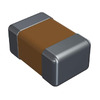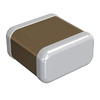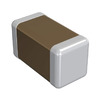2N3055 Transistor Guide
2024-09-24
1523
Catalog

2N3055 BJT Properties and Applications
The 2N3055 stands out due to its reliability and durability, increasingly seen in power supply, switching, and amplification contexts. This component’s robust metal casing and strict adherence to safety standards have solidified its role in these applications. The 2N3055 features a metal TO-3 package that ensures enhanced thermal management and mechanical protection. In power supply circuits, the 2N3055 converts alternating current (AC) to stable direct current (DC). Its ability to handle high currents and voltages makes it ideal for power regulators and converters. The 2N3055 is also prominent in switching applications, acting as a reliable switch in various electronic circuits. With fast switching capabilities, it is required in applications like motor controllers and pulse-width modulation (PWM) controllers.
|
IMPORTANT FEATURES OF THE 2N3055
BJT TRANSISTOR |
|
|
Feature |
Importance Level |
|
Reliable, safe area operation |
High |
|
RoHS compliant |
High (some markets, like the EU, all electronic parts adhere to RoHS
regulations) |
|
20 – 70 collector current gain range |
Moderate |
|
Metal case construction |
High (for hazardous environment operation) |
|
Simple design |
Moderate |
2N3055 BJT Specifications

The datasheet of the 2N3055 provides specific parameters that inform its effective application. For reliable usage, it is considered maximum ratings, thermal properties, and electrical attributes. Respecting these elements aids decision-making processes during circuit design. Incorporating the 2N3055 transistor into circuits demands meticulous attention to its specified parameters. Utilizing simulation tools for modeling scenarios before physical implementation can prevent potential issues. Learning from established designs and existing applications offers invaluable perspectives, aiding the effective use of the transistor’s features. Comprehensive testing and proactive adjustments lead to robust and reliable circuits.

2N3055 BJT Characteristics



The 2N3055 is a widely utilized NPN bipolar junction transistor (BJT) known for its dependability and versatility in an array of applications, especially in power amplifiers and switching circuits. Its regular pairing with the PNP counterpart, MJ2955, allows for the formation of push-pull amplifier configurations. The datasheet reveals that the saturation characteristics of the 2N3055 and MJ2955 display minimal differences in collector currents up to 1.0 A, implying similar performance in low to moderate-current applications. More pronounced differences appear at higher currents in designs requiring current handling Examining the datasheet, the normal "ON" state and DC gain curves indicate that the MJ2955-PNP configurations often demonstrate higher gain within specified ranges compared to the 2N3055. This trait renders the MJ2955 more fitting for applications requiring substantial amplification with lower base drive currents.
PCB Design With the 2N3055 Datasheet

The adoption of verified CAD models from reputable sources emerges as a reliable solution. These models provide precise measurements and characteristics, diminishing the possibility of errors that could lead to expensive and time-consuming redesigns. Leveraging these trusted models early on can set a robust foundation, substantially reducing the risk of integration issues later in the process. Drawing from extensive professional experiences, an approach to PCB design rooted in precise datasheet interpretation and the application of verified CAD models is highly recommended. This systematic process ensures a greater degree of design integrity and operational dependability. By leveraging verified resources, This can deploy electronic components like the 2N3055 BJT, ensuring successful outcomes in complex projects.
 ABOUT US
Customer satisfaction every time. Mutual trust and common interests.
ABOUT US
Customer satisfaction every time. Mutual trust and common interests.
function test. The highest cost-effective products and the best service is our eternal commitment.
Hot Article
- Are CR2032 and CR2016 Interchangeable
- MOSFET: Definition, Working Principle and Selection
- Relay Installation and Testing, Interpretation of Relay Wiring Diagrams
- CR2016 vs. CR2032 What’s the difference
- NPN vs. PNP: What's the Difference?
- esp32 vs stm32: which microcontroller is better for you?
- LM358 Dual Operational Amplifier Comprehensive Guide: Pinouts, Circuit Diagrams, Equivalents, Useful Examples
- CR2032 VS DL2032 VS CR2025 Comparison Guide
- Understanding the Differences ESP32 and ESP32-S3 Technical and Performance Analysis
- Detailed Analysis of RC Series Circuit
 ULN2803ADWR Datasheet
ULN2803ADWR Datasheet
2024-09-24
 Understanding Operational Amplifiers: Fundamentals, Uses, and Applications
Understanding Operational Amplifiers: Fundamentals, Uses, and Applications
2024-09-20
Hot Part Number
 0402YC822KAT2A
0402YC822KAT2A TMK105BJ333KV-F
TMK105BJ333KV-F LD035C221JAB2A
LD035C221JAB2A TMK325C7226MM-T
TMK325C7226MM-T 0805YC103KA72A
0805YC103KA72A GRM0336S1E3R6CD01D
GRM0336S1E3R6CD01D GRM1555C1E7R8CZ01D
GRM1555C1E7R8CZ01D GRM1556S1H3R5CZ01D
GRM1556S1H3R5CZ01D GRM1886S1H6R1DZ01D
GRM1886S1H6R1DZ01D 5045200691
5045200691
- CY8C9520A-24PVXI
- AT25010B-XHL-T
- MAX1760EUB
- MLK1005S1N2ST000
- LE9500ABJCT
- MAX3265CUE
- MAX6950EEE+T
- 6MBP75L-060ELX-01
- MCC21-14i08
- SKKT106B08D
- TPS565208DDCR
- AD7685BRMZRL7
- LTC4555EUD#TRPBF
- LM25017SD/NOPB
- MCT62S
- UC3825QTRG3
- DAC5672IPFBR
- STM6905TZEDS6F
- 74LVT573D
- IS61LV5128-15K
- LT1076CT
- MT6515A/B
- N80930AD2
- OMAP330BZZG
- PEF24902HV3.2
- PS2833-4-F4
- TAPC64013EBLLK3E
- TMS77C82NL
- UPD78F0535AGKA-GAJ
- PEF98035ETV1.3
- RBAQ24TTEB103JH
- XC9572XL-15PC44I
- MST6M181VSA-LF
- HY25LQDFD1GAMD-BPHE
- K4U52324QE-BC08
- ACPM-7392
- DE56VS589AE3BLC
- H5GC4H24MFR-T2C
- LM5175RHF